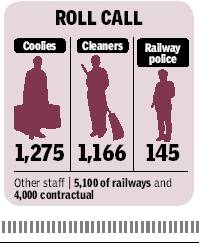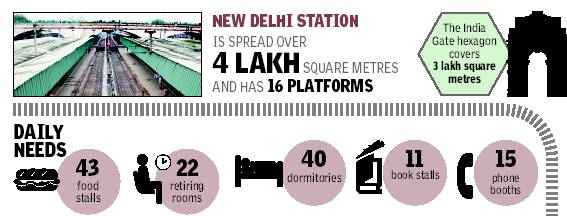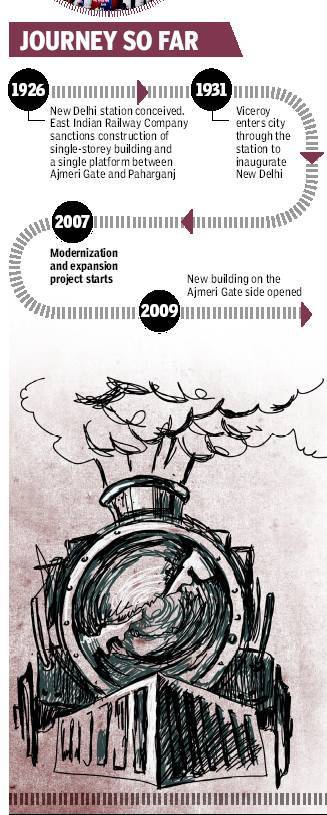Delhi/ New Delhi: Railway Stations
This is a collection of articles archived for the excellence of their content. Readers will be able to edit existing articles and post new articles directly |
New Delhi Railway Station
BETWEEN THE LINES
Nanya Srivastava | TNN
On any day, the city’s biggest railway station handles more than 300 trains and serves around 5 lakh people. It’s an exceedingly complex job that keeps nine departments and close to 9,000 staff on their toes. “Everything has a schedule and it has to be followed. It requires planning, anticipating what can go wrong, and making arrangements accordingly,” says BK Shukla, the chief station manager.
The power cabin handles three of the station’s most important functions—signalling, traffic and public address—and on this afternoon two men are coordinating the movement of trains over walkie-talkies. They have to update the wall map and ensure that the platforms are cleared for the coming trains on time. Although the station has 16 platforms, there are only four tracks leading in and out of it, and with a train every five minutes, on average, there’s a lot of coordination to be done. Especially in the rush hours, like on this hot afternoon.
Within the power cabin, a man sits in a small enclosure, making announcements on a microphone. Now he’s calling the attention of a woman whose husband is waiting at the entrance of platform 1. Another official sits at a computer that plays recorded announcements.
Besides the three important functions handled by the power cabin, the station has other departments—mechanical, electrical, engineering, commercial, telecommunication, security and medical—for smooth operation. However, the nerve centre is the cabin of the chief station manager. He coordinates with all the departments and takes care of any glitch that occurs.
The information will soon be available on the 139 helpline and announced on the public address system. The PA system and train information boards are maintained by the telecommunication department. Shukla says each department has a task and as long as they do their bit, there are no problems.
The traffic department sees to it that trains run on time, while the signals department handles 309 signals on the station to guide trains and also maintains tracks. The mechanical, electrical and engineering departments are responsible for technical maintenance of trains and ensure they are safe and the passenger amenities are in order. The train drivers are supervised by the mechanical department, which also takes care of the loco shed where the engines are kept.
The crucial passenger interaction is handled by the commercial department. It manages booking of tickets, train charts, ticket checking, waiting rooms, retiring rooms, catering and enquiry. The department also handles parcels (or luggage). A luggage van—every train has two—has a capacity of eight tonnes, but special trains like Rajdhanis have four-tonne vans.
The cups of tea sold in a day: 5,000.
The security arrangements: there are 152 CCTV cameras and the footage from all of them can be viewed. The security is managed by Railway Protection Force (RPF) and Government Railway Police (GRP). The medical department, apart from keeping first aid boxes at platforms 1 and 16, also employs staff to clean the station area.
There is no opening or closing time for the station. The enquiry sections are among the most crowded parts. The officials claim that the line “never breaks”. It thins in the night and thickens by afternoon but there is no time when there aren’t people at the counter. “In rush hour, we answer queries of 500-odd people in an hour,” says an official before turning his attention back on the crowd.



